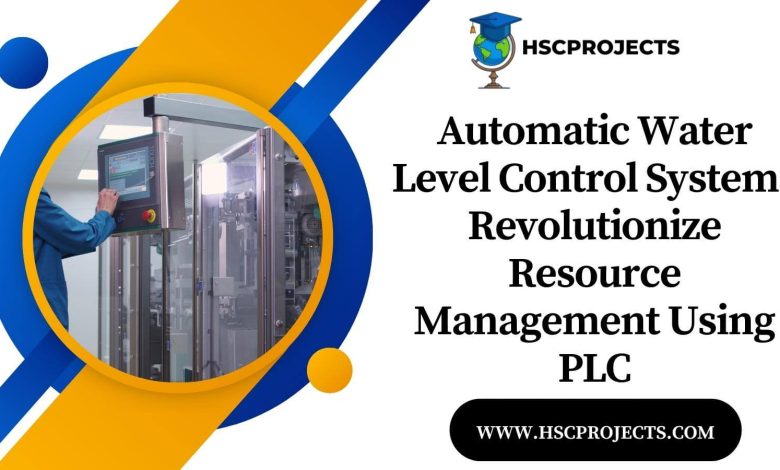
Automatic Water Level Control Systems Revolutionize Resource Management Using PLC
Introduction
The significance of efficient water management cannot be overstated, especially in industrial settings. This article delves into an advanced solution: Automatic Water Level Control Systems using Programmable Logic Controllers (PLC).

The Problem Statement
Industries often grapple with the challenge of water overflow in tanks, leading to resource wastage. The traditional methods of monitoring water levels are not only cumbersome but also inaccurate at times.
Key Features of the System
Components:
- Solenoid Valve: Regulates the water flow
- Float Sensors: For sensing maximum and minimum water levels
- PLC: The brain behind the operation
- Buttons, LED, Lamps: For controls and indications
- DC Pump: Drives the water flow
How Does it Work? (Working Principle of Water Level Indicator)
The automatic water level control system utilizes two float sensors. One sensor is positioned at the bottom to detect low water levels and another at the top to monitor high water levels. When water reaches the low-level mark, the DC pump is activated to fill the tank. On reaching the upper threshold, a solenoid valve opens to divert the water, preventing overflow.
Operational Mechanism (Automatic Water Level Controller Working Principle)
The PLC continuously receives signals from the float sensors. A green light on the PLC indicates that the DC pump is active, while a blue light signifies that the solenoid valve is operational. This automation allows for precise control, accommodating variable filling or draining flows.
Advantages of Automatic Water Level Control System
- Resource Management: Helps in maintaining a constant water level
- Energy Efficiency: Use of motors of varying power for prolonged periods without frequent turn-offs
- Shock Prevention: Eliminates abrupt changes in the water network
Conclusion
Implementing an automatic water level control system using PLC is not just a technological leap but also a step towards sustainable and efficient water resource management.
Sample Code
The code assumes the following:
- ‘
I0.0‘ and ‘I0.1‘ are the inputs from the float sensors. - ‘
Q0.0‘ controls the DC Pump. - ‘
Q0.1‘ controls the Solenoid Valve. - ‘
M0.0‘ is a memory bit to represent the tank being full. - ‘
M0.1‘ is a memory bit to represent the tank being empty.
Network 1: Detect Low Level and Activate Pump
I0.0 M0.1 Q0.0
|----]/[-----]/[------]( )
Low-Level Empty Pump
Network 2: Detect High Level and Activate Solenoid Valve
I0.1 M0.0 Q0.1
|----]/[-----]/[------]( )
High-Level Full Solenoid
Network 3: Reset Empty and Full Indicators
I0.0 I0.1 M0.1
|----]/[-----]/[------](R)
Low-Level High-Level Empty
I0.1 I0.0 M0.0
|----]/[-----]/[------](R)
High-Level Low-Level Full
Network 4: Set Empty and Full Indicators
I0.0 M0.1
|----]/[------](S)
Low-Level Empty
I0.1 M0.0
|----]/[------](S)
High-Level Full
In order to download the PDF, You must follow on Youtube. Once done, Click on Submit
Follow On YoutubeSubscribed? Click on Confirm
Download Automatic Water Level Control Systems Revolutionize Resource Management Using PLC PDF






